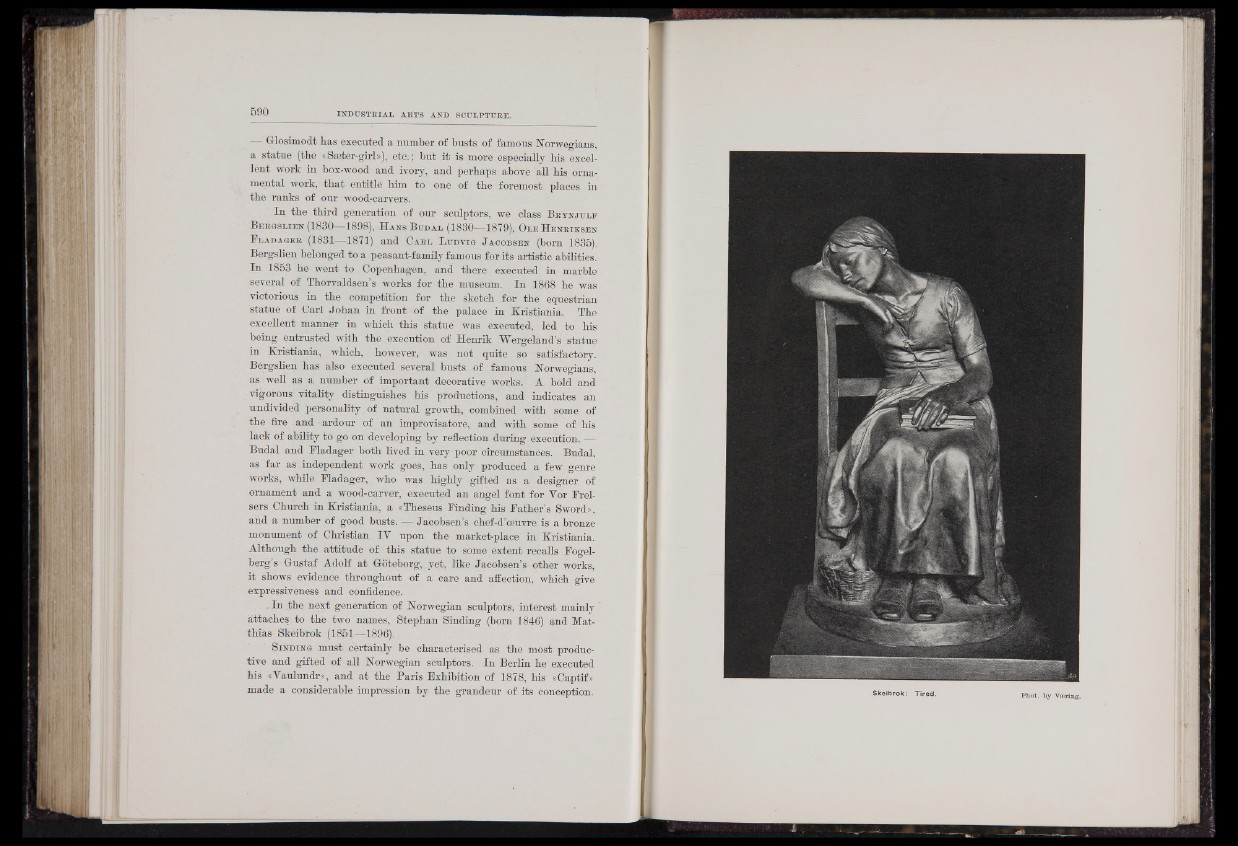
— Glosimodt has executed a number of busts of famous Norwegians,
a statue (the «Sseter-girl»), etc.; but it is more especially bis excellent
work in box-wood and ivory, and perhaps above all bis ornamental
work, that entitle him to one of the foremost places in
the ranks of our wood-carvers.
In the third generation of our sculptors, we class B r y n j u l p
B e r g s l i e n (1830—1898), H a n s B u d a l (1830—1879), O l e H e n r i k s e n
F l a d a g e r (1831—1871) and C a r l L u d v i g J a c o b s e n (bom 1835).
Bergslien belonged to a peasant-family famous for its artistic abilities.
In 1853 he went to Copenhagen, and there executed in marble
several of Thorvaldsen’s works for the museum. In 1868 he was
victorious in the competition for the sketch for the equestrian
statue of Carl Johan in front of the palace in Kristiania. The
excellent manner in which this statue was executed, led to his
being entrusted with the execution of Henrik Wergeland’s statue
in Kristiania, which, however, was. not quite so satisfactory.
Bergslien has also executed several busts of famous Norwegians,
as well as a number of important decorative works. A bold and
vigorous vitality distinguishes his productions, and indicates an
undivided personality of natural growth, combined with some of
the fire and ardour of an improvisatore, and with some of his
lack of ability to go on developing by reflection during execution. IB
Budal and Fladager' both lived in very poor circumstances. Budal,
as far as independent work goes, has only produced a few genre
works, while Fladager, who was highly gifted as a designer of
ornament and a wood-carver, executed an angel font fpr Yor Frel-
sers Church in Kristiania, a «Theseus Finding his Father’s Sword»,
and a number of good busts. -^Jacobsen’s chef-d’oenvre is a bronze
monument of Christian IV upon the market-place in Kristiania.
Although the attitude of this statue to some extent recalls Fogel-
berg’s Gustaf Adolf at Göteborg, yet, like Jacobsen’s other works,
it shows evidence throughout of a care and affection, which give
expressiveness and confidence.
In .the next generation of Norwegian sculptors-, interest mainly
attaches to the two names, Stephan Sinding (bom 1846) and Matthias
Skeibrok (1851—1896).
S i n d i n g must certainly be characterised as the most productive
and gifted of all Norwegian sculptors. In Berlin he executed
his «Vaulundr», and at the Paris Exhibition of 1878, his' «Captif»
made a considerable impression by the grandeur of its conception. Skeibrok: Tired. Phot, by Veering.